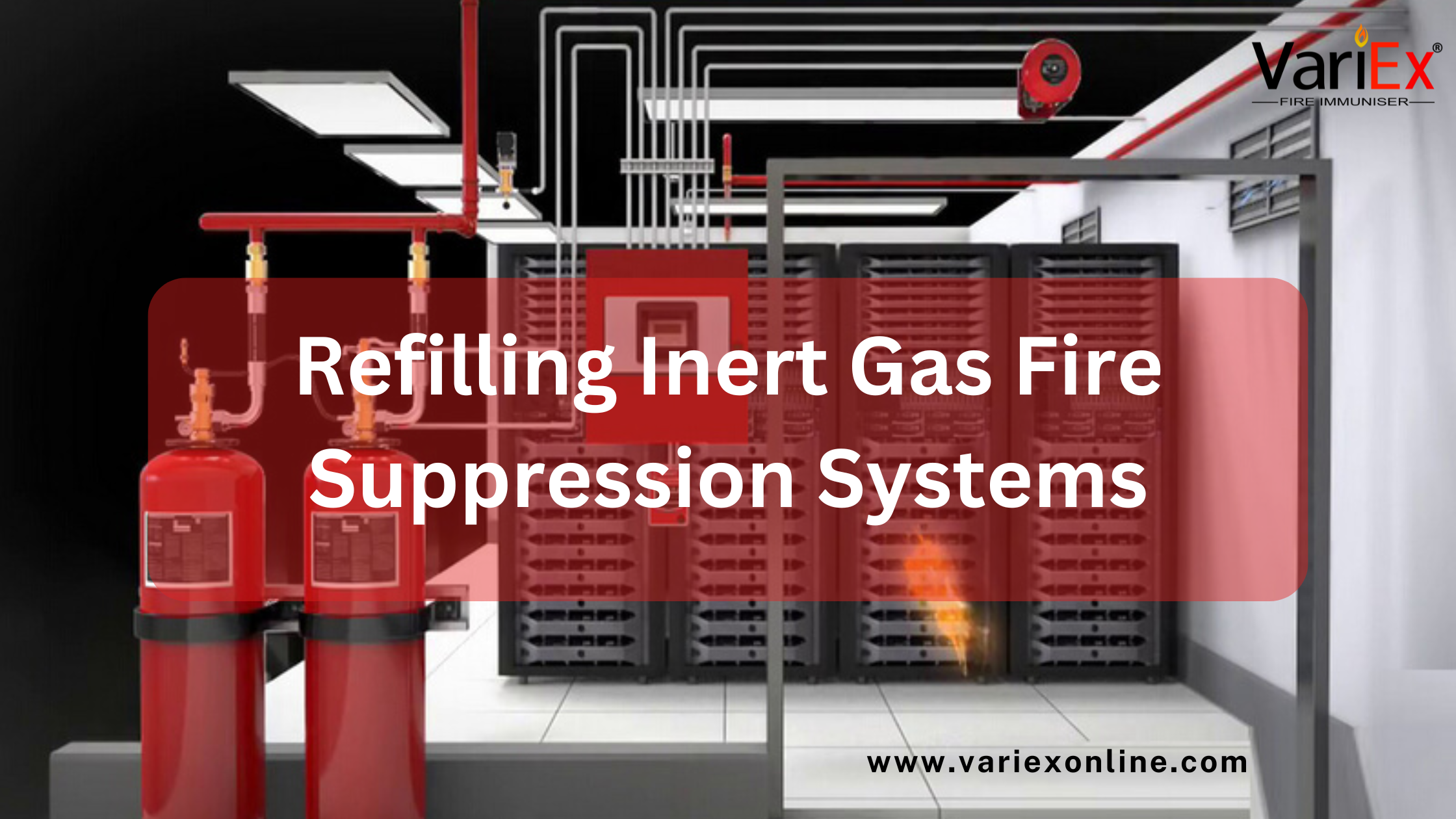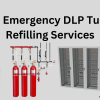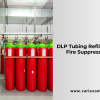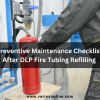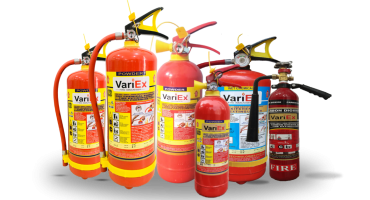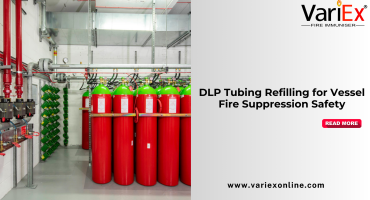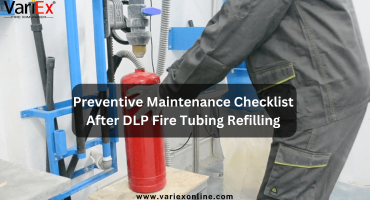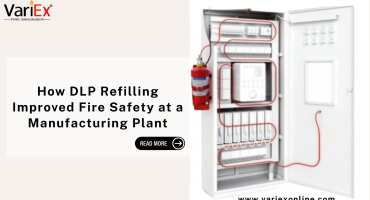![]()
Fire Immuniser
+91-7829629111
Email: info@variex.in
Varistor Technologies Pvt. Ltd.
Block-1, First Floor, Ardente Office One, Hoodi Circle, ITPL Main Road, Bengaluru, Karnataka 560048, IN
Refilling Inert Gas Fire Suppression Systems
Refilling Inert Gas Fire Suppression Systems
Inert gas fire suppression systems are among the safest and most environmentally friendly fire protection solutions for critical infrastructure, such as data centers, clean rooms, museums, and industrial plants. These systems rely on gases like nitrogen, argon, and carbon dioxide to reduce oxygen levels and suppress fires without leaving behind harmful residues.
However, like all fire protection systems, inert gas systems require regular maintenance and timely refilling to ensure operational readiness. In this complete guide, we’ll explore how inert gas fire suppression systems work, why and when refilling is necessary, the refilling process, and best practices for safe and compliant operations.
What Is an Inert Gas Fire Suppression System?
Inert gas fire suppression systems extinguish fires by displacing oxygen in a protected area to a level where combustion can no longer occur, typically reducing oxygen levels to about 12–15%. The key advantage of these systems is that they suppress fires without damaging sensitive electronics or introducing chemical residues.
The most common inert gases used are:
Nitrogen (N2)
Argon (Ar)
Carbon Dioxide (CO2)
Argonite (a blend of argon and nitrogen)
Inergen (a blend of nitrogen, argon, and a small amount of CO2)
These agents are safe for occupied spaces, non-conductive, and environmentally sustainable.
Why Refilling Inert Gas Fire Suppression Systems Is Essential
Regular refilling ensures that the fire suppression system is fully charged and ready to respond instantly when a fire is detected. Key reasons for refilling include:
Replenishing gas lost from accidental discharges or maintenance testing.
Maintaining compliance with NFPA 2001, ISO 14520, and local fire codes.
Preventing pressure loss due to minor leaks or aging cylinder seals.
Guaranteeing that oxygen-reduction capabilities meet original design specifications.
Ignoring refills may lead to delayed suppression during an actual fire, putting lives, equipment, and operations at risk.
Common Inert Gases Used in Fire Suppression Systems
| Inert Gas | Typical Composition | Primary Use Cases | Environmental Impact | Refill Interval |
|---|---|---|---|---|
| Nitrogen (N2) | 100% Nitrogen | Data centers, telecom rooms | Zero GWP, zero ODP | 5–10 years |
| Argon (Ar) | 100% Argon | Laboratories, art galleries | Zero GWP, zero ODP | 5–10 years |
| Argonite | 50% Nitrogen, 50% Argon | Clean rooms, heritage sites | Zero GWP, zero ODP | 5–10 years |
| Inergen | 52% Nitrogen, 40% Argon, 8% CO2 | Server rooms, chemical storage | Low GWP, zero ODP | 5–10 years |
| Carbon Dioxide (CO2)* | 100% CO2 | Industrial machinery rooms | Medium GWP | 5 years (hydro test) |
*Note: CO2, while technically an inert gas, requires special handling due to its asphyxiation risks in occupied areas.
When Should Inert Gas Fire Suppression Systems Be Refilled?
Refilling schedules vary based on the type of system, agent used, and operational environment. However, typical refill triggers include:
After system discharge: Even if partial, any discharge event requires a full refill.
Post-maintenance testing: Some tests release small quantities of the agent.
Scheduled intervals: Generally every 5 to 10 years as per NFPA guidelines.
Leak detection: If pressure sensors indicate a drop in cylinder pressure.
Early detection of leaks and prompt refilling prevent system downtime and safety hazards.
Step-by-Step Process of Refilling Inert Gas Systems
Step 1: Pre-Refill Inspection
Inspect all cylinders for corrosion, pressure levels, and valve integrity.
Verify the last hydrostatic test date.
Identify any accidental discharges or leaks.
Step 2: Evacuation & Safety Preparation
Evacuate personnel if working with high-pressure systems.
Use proper ventilation if trace amounts of gas are released during the process.
Isolate the suppression system from the fire detection system to prevent accidental activation.
Step 3: Gas Refill
Connect refill lines to the agent cylinders.
Refill with the exact composition of the original inert gas blend.
Use certified gas supply vendors to ensure purity and pressure standards.
Step 4: Pressure Testing and Leak Verification
Pressurize the system to the required levels, usually 150–200 bar.
Perform leak detection using ultrasonic sensors or soap solution tests.
Step 5: System Functional Test
Verify electronic monitoring systems, alarms, and pressure switches.
Ensure all discharge valves and piping are reset and ready for operation.
Step 6: Documentation and Compliance
Update the maintenance logs with refill details.
Apply new certification tags showing the next scheduled inspection.
Safety Considerations During the Refill Process
Refilling inert gas systems involves working with high-pressure cylinders and confined spaces. Follow these safety precautions:
Only certified fire suppression technicians should perform refills.
Ensure the area is ventilated and evacuation protocols are in place.
Wear appropriate personal protective equipment (PPE), including gloves and safety goggles.
Conduct refill operations according to NFPA 2001, ISO 14520, and local regulations.
Environmental Impact of Inert Gas Agents
One of the primary advantages of inert gas suppression systems is their minimal environmental footprint. Gases like nitrogen and argon are naturally occurring and have:
Zero ozone depletion potential (ODP)
Zero or negligible global warming potential (GWP)
No toxic or corrosive byproducts
This makes inert gas systems ideal for companies committed to sustainability and green building certifications.
Challenges in Refilling Inert Gas Systems
Despite their many benefits, inert gas systems present some logistical challenges during refilling:
High-pressure cylinders require specialized filling equipment and safety controls.
Custom gas blends like Inergen and Argonite must be accurately measured.
Transporting inert gases to remote industrial facilities can be costly.
Downtime during refill may disrupt operations if not scheduled properly.
Planning refills during scheduled maintenance windows minimizes these operational disruptions.
Choosing a Qualified Refill Service Provider
When selecting a refill provider, industrial facilities should look for:
Certified fire suppression technicians trained in inert gas systems.
Access to certified gas suppliers for blends like Inergen or Argonite.
Emergency refill services with quick turnaround times.
Full documentation for insurance and regulatory audits.
Experience with your industry’s specific fire hazards.
Cost of Refilling Inert Gas Fire Suppression Systems
The cost of refilling an inert gas system depends on several factors, including:
The volume of gas required
The complexity of the gas blend
Location and transport costs
System size and pressure levels
On average, refill costs range from ₹34,163 to ₹1,02,491 per cylinder, including testing and certification.
Best Practices to Minimize Future Refills
Install leak detection sensors to monitor agent loss proactively.
Schedule annual inspections to detect pressure loss early.
Train staff to avoid accidental activations during maintenance.
Maintain cylinders in a temperature-controlled environment to prevent pressure fluctuation.
Future Trends in Inert Gas Suppression Systems
As safety and environmental standards evolve, inert gas suppression systems are incorporating:
Smart monitoring systems to track cylinder pressure in real-time.
Remote diagnostics to predict maintenance needs.
Improved gas storage technologies that extend refill intervals.
Further reductions in system footprint for easier installation in tight spaces.
Conclusion
Refilling inert gas fire suppression systems is a critical aspect of maintaining reliable fire protection in high-risk, sensitive environments. With zero environmental impact and safe operation for occupied spaces, these systems offer peace of mind—provided they are regularly inspected, refilled, and tested by certified professionals.
By understanding the refill process, safety protocols, and best practices, facility managers can keep their fire suppression systems ready for any emergency while minimizing operational downtime.
Frequently Asked Questions
Typically every 5 to 10 years, or immediately after a discharge or detected leak.
Refills are best done during scheduled downtime, but some systems allow partial refills without full shutdown.
Yes, inert gases are safe at design concentrations, but evacuation is recommended as a precaution.
Yes, nitrogen is generally less expensive compared to mixed gases like Inergen.
Only certified fire suppression technicians trained in inert gas systems and compliant with NFPA and ISO standards.
Final Say
At VariEx.in and VariexOnline.com, we specialize in supplying and installing top-quality fire fighting systems and equipment. From fire extinguishers to advanced suppression systems, we offer comprehensive solutions tailored to your needs. Our experienced team ensures precise installation and maintenance for optimal safety.
Trust VariEx for reliable fire protection. Contact us online or call 7829629111 to learn more.
We specialize in manufacturing, supplying, and distributing a comprehensive range of fire fighting equipment, including state-of-the-art fire extinguishers. Read our most searched blogs and find interesting information on topics such as how to use a fire extinguisher, how to calculate fire fighting water tank capacity, fire extinguisher refilling, obtaining a Fire NOC, understanding fire fighting systems, types of fire protection systems, the fire hydrant system, and the fire sprinkler system. These resources provide essential knowledge for ensuring safety and compliance with fire safety regulations. Additionally, you can explore guides on the maintenance of fire protection equipment, the latest advancements in fire safety technology, and best practices for fire risk assessment and management.
Our expertise extends to fire alarm systems, fire hydrant systems, and fire suppression systems, including fire sprinklers. Each product meets rigorous international standards for reliability and performance, ensuring effective fire safety products tailored to diverse applications and industries. Additionally, we are providing Fire Extinguisher Refilling and AMC services to ensure ongoing maintenance and operational readiness of fire safety equipment.


